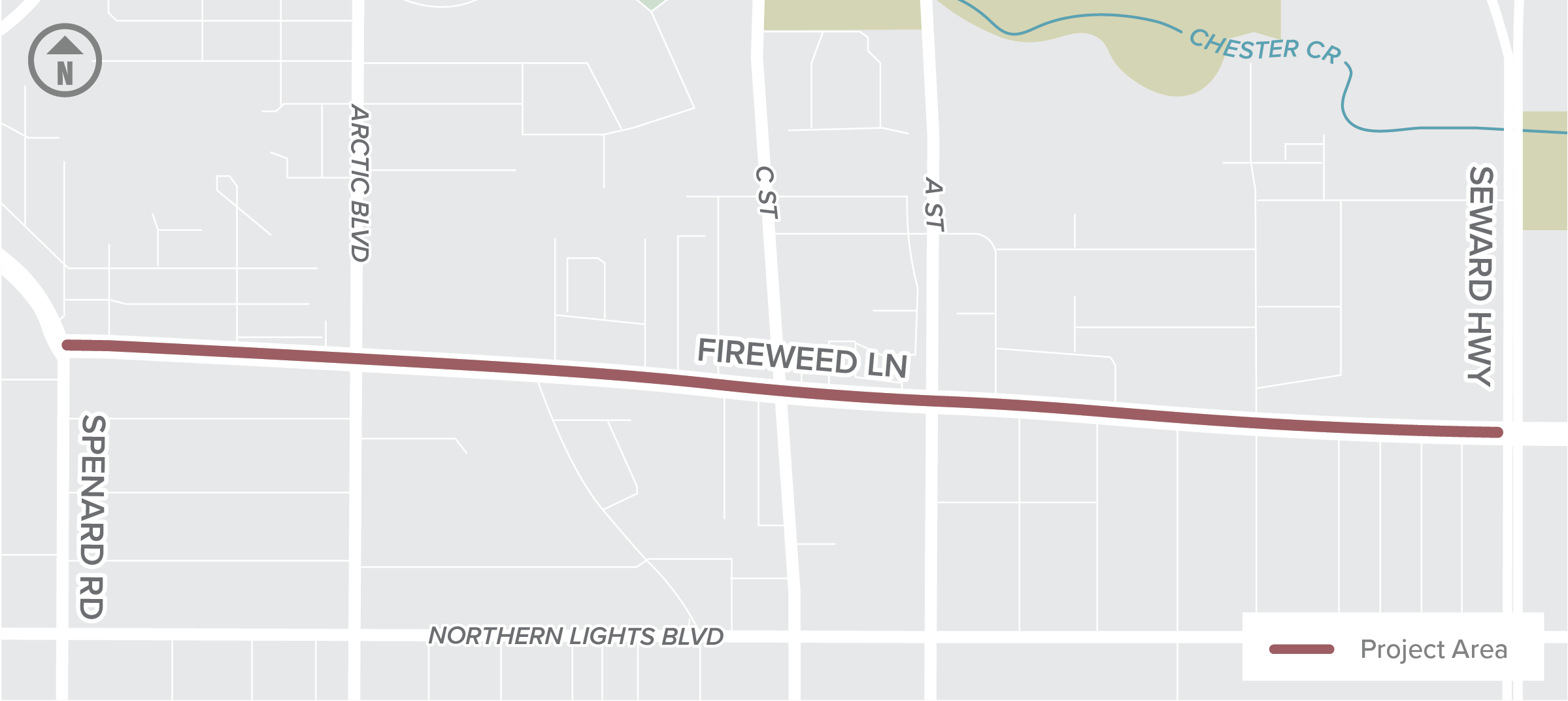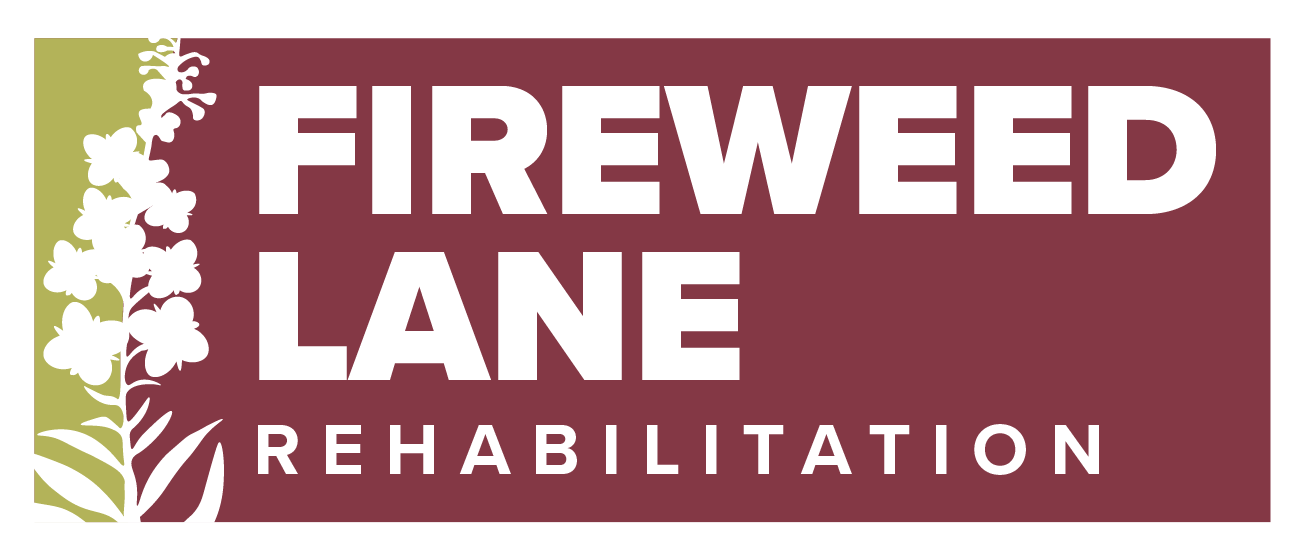State of Alaska Project No. CFHW00528 /Federal No. 0001661
Project Description
The State of Alaska Department of Transportation and Public Facilities (DOT&PF), in cooperation with the Municipality of Anchorage (MOA), proposes to rehabilitate Fireweed Lane from Spenard Road to the Seward Highway to improve safety and to bring the roadway and non-motorized facilities up to current design standards. This road is jointly owned and maintained by the MOA and DOT&PF, and the project is funded through the Anchorage Metropolitan Area Transportation Solutions (AMATS) program. Design will be led by DOT&PF with support from the MOA. It is anticipated that at the conclusion of this project, the MOA will assume full ownership and maintenance responsibilities.
The project team will analyze and design alternative roadway configurations to rehabilitate Fireweed Lane to improve motorized and active transportation needs, as well as business circulation and access along the corridor.
The project will follow federal aid funding constraints including compliance with the National Environmental Policy Act (NEPA), the federal right-of-way (ROW) process outlined in the Uniform Act, and the MOA’s Context Sensitive Solutions approach.
Project Area

Project History
Fireweed Lane is a 4-lane minor arterial between Spenard Road and the Seward Highway. This project was originally initiated by DOT&PF in the late 1990’s under the Highway Safety Improvement Program (HSIP) to address vehicle crashes and the lack of pedestrian, public transit, and bicycle facilities.
DOT&PF conducted traffic and safety studies, public outreach, typical section analysis, and preliminary engineering and recommended that Fireweed Lane be converted to a 3-lane section by using a road-diet technique. In the mid- 2000’s, the MOA took over the project and continued detailed engineering, surveying, public outreach, and design studies. Local businesses raised concerns about perceived impacts associated with reducing traffic by removing through lanes and design was not completed.
Since that time, many successful road-diet projects have been constructed in Anchorage and have been well received by the community. Local businesses and the traveling public have seen firsthand that well-designed road-diet projects slow traffic and improve safety by incorporating dedicated turn lanes and narrower cross sections that reduce rear end and side swipe crashes. Because of this, AMATS, the DOT&PF and the MOA have re-initiated the project.
| To sign up for our mailing list, click here. | To submit comments, click here. |

